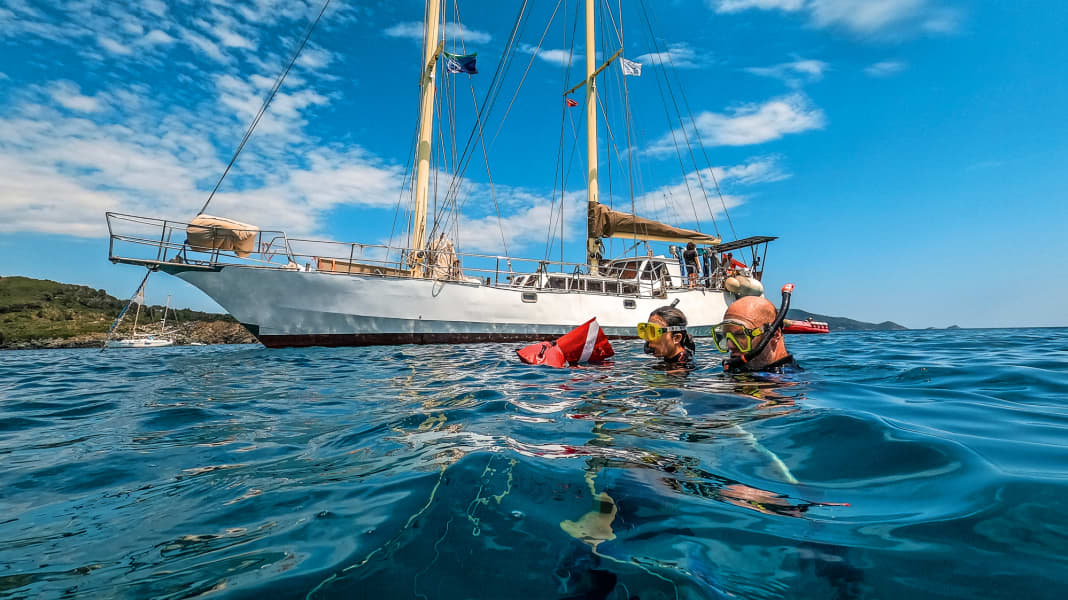
- "Aldebaran" - the yellow media ship from the Elbe
- The "Eugen Seibold" - the Max Planck Institute's deep-sea laboratory
- The "Witness" from Greenpeace
- The "Blue Panda" of the WWF
- The "Waya Waya" - travelling in the Mare Nostrum
- The "Marevida" - a 71-foot schooner for ice travel
- The "Pangaea" by Mike Horn
- "Dagmar Aaen" - the shark cutter from Arved Fuchs
- "Manta" - The Sea Cleaners
A yellow sailing ship is moored in Eckernförde Bay, with divers, chemists and skipper Frank Schweikert on board. They are not here to sail. The crew is searching for bombs, torpedoes and grenades from the Second World War. Two divers and the underwater robot "Findus" go into the water. They want to take samples, scan the seabed and detect compounds typical of explosives. In many areas of the Baltic Sea, mines and munitions are rusting away, their toxic substances polluting the ecosystems.
The equipment on the "Aldebaran" is impressive. On board are echographs, hydrophones and microscopes. There are also bottom grabs, metal detectors and multimeters to measure the oxygen and salt content, pH values and conductivity of the water. In short, the Ovni 43 is a sailing laboratory. A research station under white cloths. Area of operation: worldwide between the Baltic Sea and the Caribbean. Most frequented areas: the shallow coastal waters of Germany and Europe. Mission: to support science and protect the sea.
The "Aldebaran" has been sailing the seas for 32 years. It has travelled over 100,000 nautical miles and supported more than 500 projects on its voyages. The munitions voyages in the Baltic Sea are just one topic. Climate research, marine litter, species extinction: Countless scientists have been on board to carry out studies and advance their field research. They came from universities from Greifswald to Hamburg, Bayreuth to Munich, as well as Gran Canaria and overseas.
Skipper Frank Schweikert is a biologist himself. His team includes technicians, cameramen, marine ecologists and biologists. In the early 1990s, the "Aldebaran" was one of the first sailing yachts to set sail in the name of research. At the time, this was a pioneering act. Initiator Schweikert remembers: "During my biology studies, I realised how little research was still being done on the oceans, especially in the shallow water areas." With his "Aldebaran", he therefore wanted to create a platform to generate new knowledge.
"Aldebaran" - the yellow media ship from the Elbe




As different as the projects are, they all pursue the same goal: saving our planet
At the time, Schweikert sailed across the Baltic Sea from Kiel to the Polish border on the first environmental expeditions. It was all about herring and the first monitoring of seagrass beds, particularly on the coast of Mecklenburg-Western Pomerania. This was followed by project after project. But it was never easy. Schweikert: "The trips took place in the shadow of public research, whose funds rarely reached us." And that is still the case - although a rethink is urgently needed. "Today, we are seeing explosive changes in the oceans," says Schweikert. "Warming in particular has suddenly taken on sensational proportions, far exceeding all forecasts."
And indeed, something is finally happening. In times of climate change, sailing ships are once again seen in a completely different light. They not only score points with their image, but also when it comes to emissions. Marine research with a minimal CO2 footprint - other vehicles can't compete with that. All blue, all green, all clean. It must be due to this trend-setting triad that the example of the "Aldebaran" has set a precedent in recent years. Under the motto "Sailing & Science", more and more sailing ships are currently cruising the seas to support countless projects.
Crews go out on ships to rescue whales and dolphins, collect rubbish or map endangered habitats. Others look after sea turtles, document the disappearance of ice or catch plankton and microplastics in remote sea areas. The tasks are complex, but the overarching goal is usually the same: to find out how bad things are on our planet. To better understand the connections. And, above all, to look for solutions to counteract this.
Ten years ago, for example, the company SubCTec in Kiel developed the "Ocean Pack" together with the French weather service and trialled it on board the "Aldebaran". A device that collects ocean and weather data and can be used specifically on yachts. "Today, every research platform we can get in the ocean counts," says Schweikert. "Because we still only know a fraction of what the oceans mean for our future on the planet."
The "Eugen Seibold" - the Max Planck Institute's deep-sea laboratory
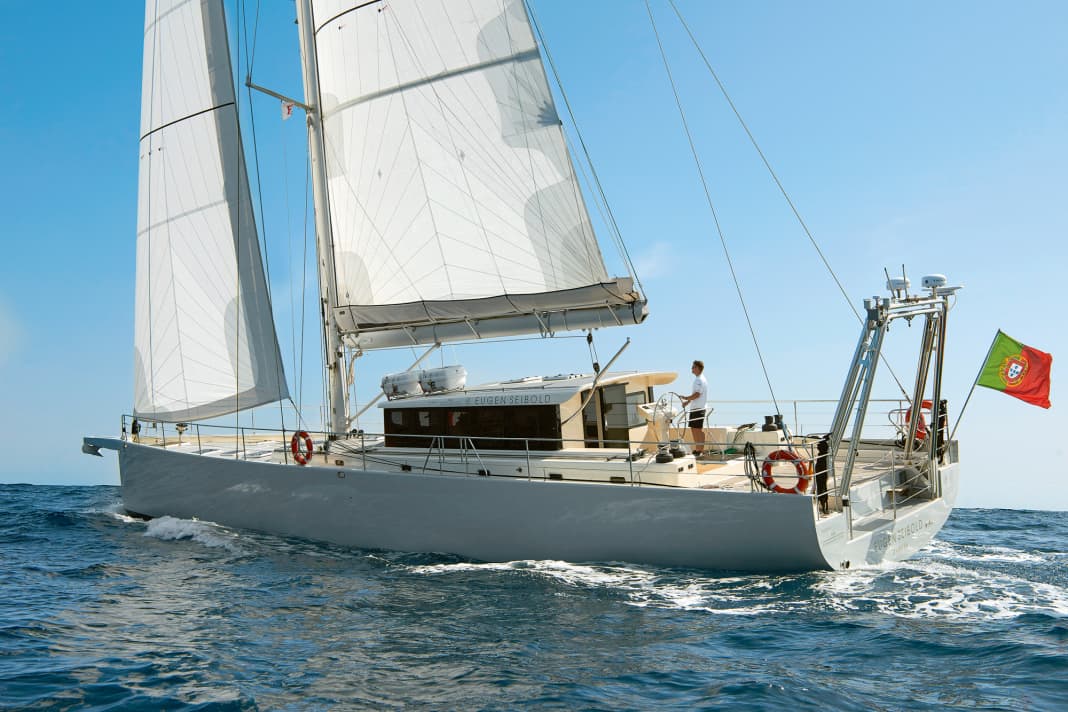



It is difficult to say how many floating NGOs and sailing marine conservationists are now travelling on their own keel and working against this. There are dozens in European waters alone. There are now internet portals where many of the projects are listed in order to gain an overview. Among them: the Max Planck Institute's 24-metre-long "Eugen Seibold", an ocean-going yacht that sets sail for marine and climate research. The crew and changing scientists on board analyse water, plankton and air samples - while sailing and without contamination.
The aim is to better understand the interactions between the ocean and the atmosphere: What role do the upper 1,000 metres of the ocean layers play in the climate? In addition, there is the calibration of palaeoceanographic archives and the attempt to better understand chemical and biological degradation processes in the oceans. The "Eugen Seibold" looks accordingly: Half the ship is equipped with microscopes, aquariums and measuring instruments, including a clean room, wet room and on-board atmospheric laboratory.
The "Witness" from Greenpeace
Large environmental protection organisations also rely on sailing ships, among other things. In September 2021, Greenpeace launched the smallest ship in its fleet, the 22.5-metre-long "Witness". The boat is polar-capable and can also retract its keel and rudder to reach riverbanks and shallower waters.
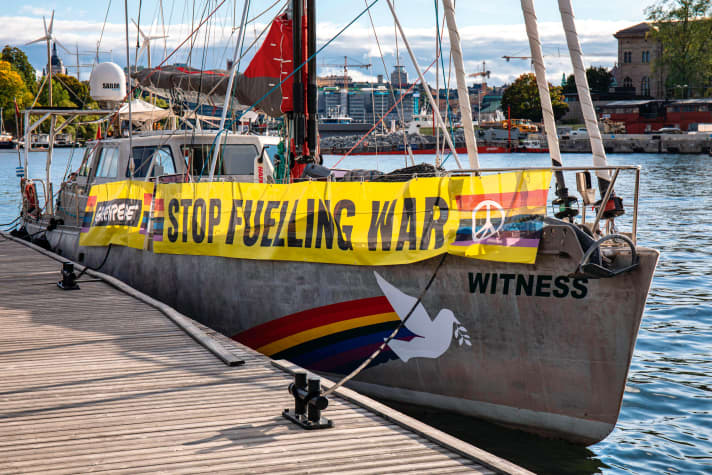
The name of the yacht says it all: the "Zeugin" wants to head for places in the world that are difficult to navigate in order to uncover environmental sins there too - overfishing and pollution caused by plastic, oil and gas. The yacht is also equipped with solar cells and wind generators, and the crew lives virtually self-sufficiently on board.
The "Blue Panda" of the WWF
The WWF is now also sailing. The 26-metre ketch "Blue Panda" mainly cruises through the Mediterranean from protected area to protected area. The goals are ambitious: Collecting data, reconciling environmental protection and tourism, pushing back invasive species, researching habitats in the deep sea and freeing coral reefs from ghost nets.

The "Blue Panda" also cruises between the Alboran Sea and the Bosporus as a sailing ambassador. According to the WWF, almost ten per cent of the Mediterranean is designated as a protected area, but only a tiny fraction of this is said to be effectively protected. Like the other research yachts, the WWF two-master is therefore primarily carrying an urgent appeal to the world: "People, please join in, please rethink!"
However, it is by no means only well-known institutes and internationally active organisations that are increasingly sending sailing yachts on voyages for their purposes. Many NGOs, foundations, adventurers and even private skippers have converted their vessels into floating marine conservation platforms. Often without public funding or capital donations. One of them is Manuel Marinelli.
The "Waya Waya" - travelling in the Mare Nostrum
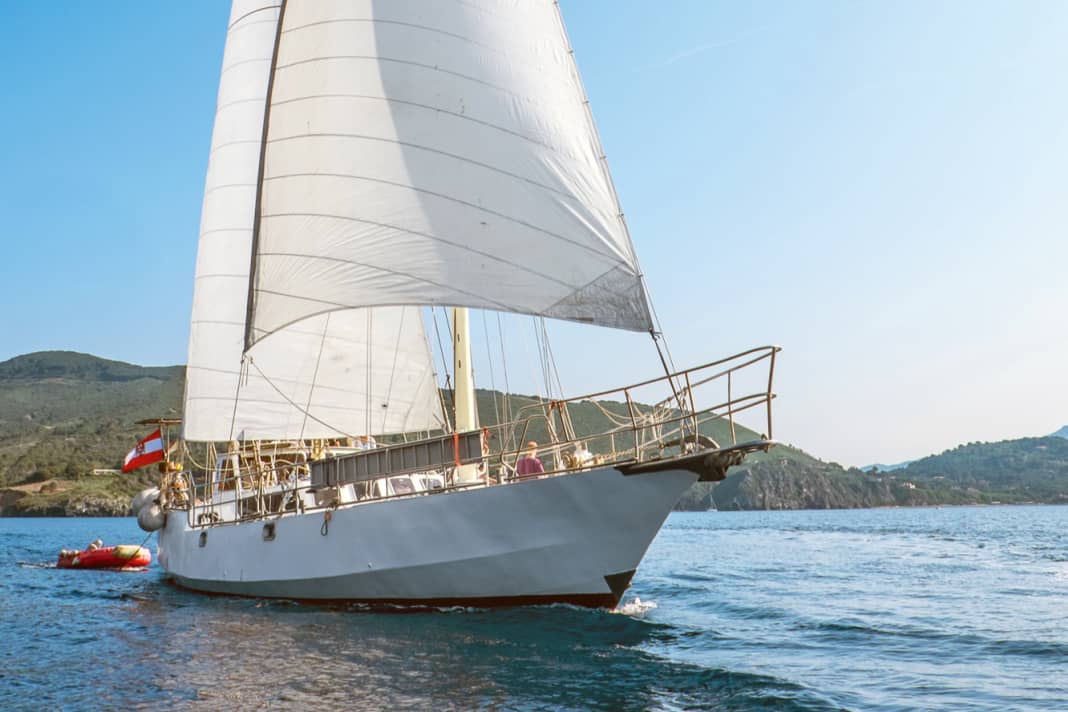



The Austrian has been travelling the Mediterranean for well over ten years. First with a smaller yacht and now with the 21-metre-long schooner "Waya Waya", he heads for areas between Greece and Corsica to tackle various problems. With his "Project Manaia" (see Yacht 15/2023), he scans zones of concentrated plastic waste and tries to understand and limit the invasion of invasive species such as the lionfish.
Eelgrass is particularly close to his heart. Marinelli regularly returns to endangered areas, analyses the population and wants to find out how the meadows can be specifically renaturalised. He collects seeds and plants them under water. To this end, he cooperates with diving centres and tries to sensitise local communities to the issue in order to get as many people as possible on board.
Changing crews from all over the world travel to join the "Waya Waya", which is supported by the German Foundation for Marine Conservation, among others. Marine biologists, whale experts, ecologists and zoology doctoral students book on board to pursue their studies. They also use sailing as a feasible and sustainable method to promote the protection of the oceans.
Marinelli knows that there is still a lot to do. "The projects of the sailing NGOs need to be much better bundled and coordinated. There is a lack of strategies, funds and clever networking," he regrets. The result: instead of being able to benefit from public funding, many organisations are dependent on private sponsorship. Although cooperation between business and science is already working to some extent, it is ultimately still in its infancy, says Marinelli. Yet the potential is huge. Sailing ships on an ecological mission can now be found in various areas.
The "Marevida"- a 71-foot schooner for ice travel
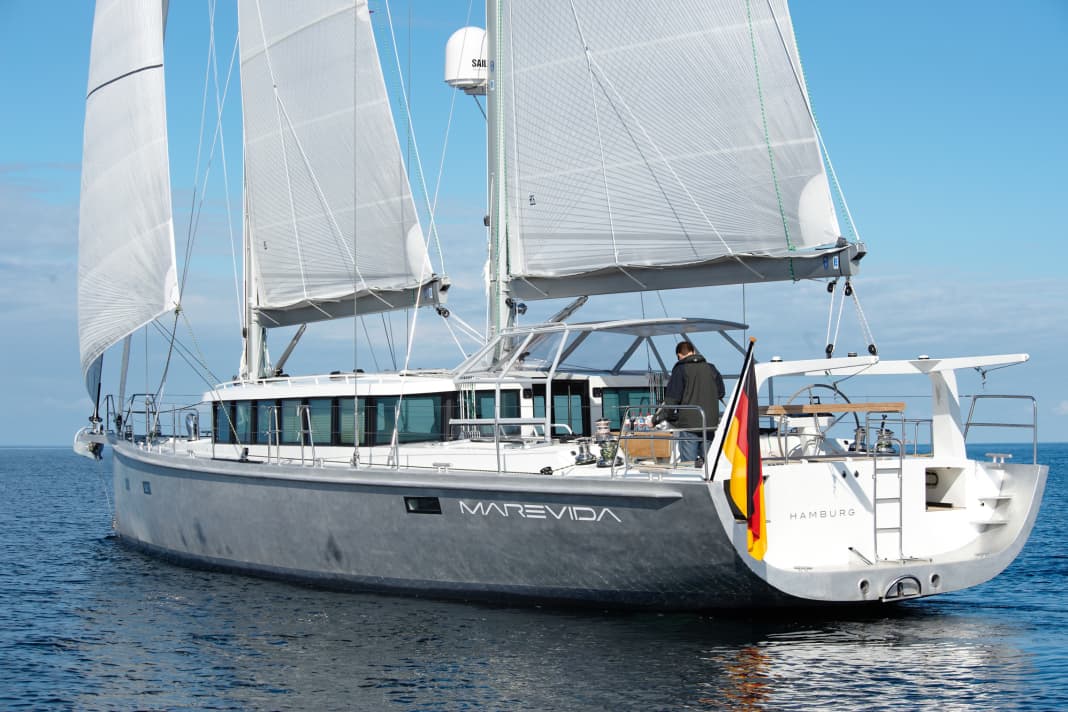


In 2019, the sailing schooner "Marevida" set course for Spitsbergen. The voyage took her to the still largely untouched expanses of the northern Arctic. With his "Project Arctic Circle", Hamburg doctor Peter Kaupke wants to show how dramatically the region is changing under the dwindling ice. A new expedition to the far north followed in 2022 to make further observations - this time in collaboration with international universities and research institutions. The data that the team brought back home will serve several disciplines: Ocean research, biosciences, fisheries, blue robotics and applied marine technology.
Students and doctoral candidates from many disciplines should be particularly happy that more and more yachts are casting off in the name of research. The young scientists can go on board themselves for their studies or provide the ships with sample containers and experiments for the voyage. This opens up completely new opportunities for them, as a number of tasks have gained enormously in importance as a result of climate change.
The problem: field research at sea is not easy. Places on large national and international research vessels are highly coveted and extremely expensive. A single day on a fully-fledged expedition steamer can cost up to 50,000 euros. What's more, the voyages take years to prepare, the logistics and technology are complex and the selection procedures are correspondingly strict.
The exploratory sailing yachts have found a welcome niche. They also head for coastal sea areas, are more flexible and significantly cheaper. Marine biologist Simon Jungblut sailed on board the "Waya Waya" this summer. He is from the University of Bremen, holds a Master of Science in Marine Biodiversity and Conservation and completed his doctorate in the field of marine zoology. Today, he coordinates the EU-funded Face-It research project. Jungblut is investigating how coastal Arctic ecosystems are changing with global warming, how plants and animals are disappearing in the Nordic fjords and how others are moving in from the south. He supports Marinelli's "Project Manaia" in the Mediterranean as a scientific advisor.
"The sailing yacht can accommodate up to twelve students from all over the world," says Jungblut. "Young researchers from Germany, Japan, Scotland and England are currently on board to advance their projects." And that is precisely what is important: early networking, the desire to work scientifically and immersion in the subject matter. "Science will have to play a major role in understanding phenomena and changing things for the better," says Jungblut. "This can't just be done from a desk."
Everyone realises that the oceans are one of the keys to saving our planet and its biodiversity, the climate and ultimately ourselves from the worst. However, the ocean and the associated causalities are highly complex. Countless measurements, data and observations are needed to understand them. Today, thousands and thousands of measuring buoys and sensors provide information. But they cannot replace the ships. Not active research at the scene of the event.
Science therefore utilises all kinds of ships. Many large container freighters now also have scientific equipment on board. These provide samples, data and measurements. However, the big ships usually sail straight along the shortest routes, often missing out on meaningful sea areas and having to adhere to strict schedules. The grid therefore remains too coarse and the findings too patchy. This is another reason why the research sailing ships are a welcome addition. They act like small satellites that can pursue specific missions.
The "Pangaea" by Mike Horn
There are also genuine sailors and adventurers who now give their journeys a meaning that goes beyond the pure experience. Extreme sportsman Mike Horn, for example, takes young people who are planning green projects and sustainable start-ups on his yacht "Pangaea". His yacht is intended to serve as a launch pad for them to realise innovative approaches.
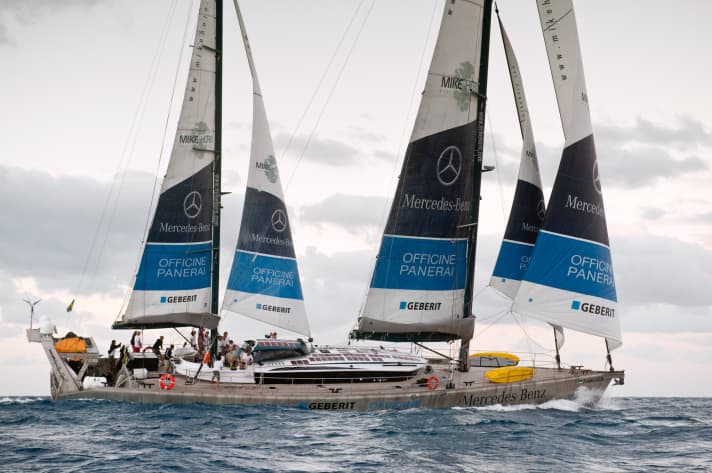
"Dagmar Aaen"- the shark cutter from Arved Fuchs
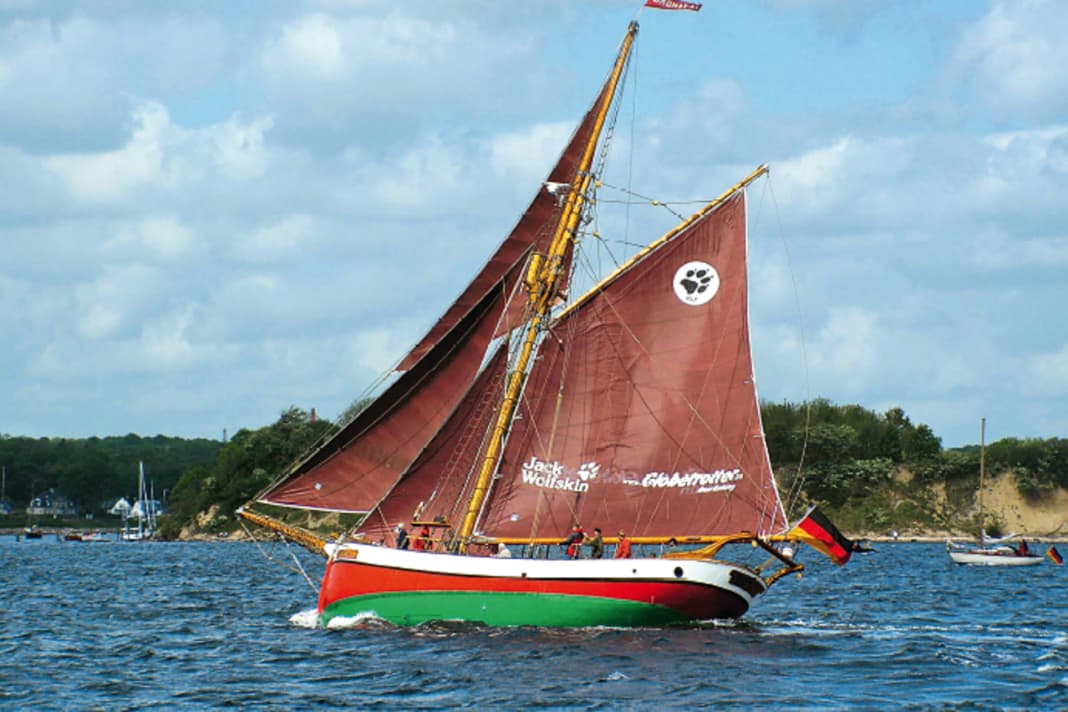



Another is Arved Fuchs. Back in 1977, an expedition took him to the Canadian province of Quebec, where he travelled remote rivers in canoes. Since then, he has sailed the north of Europe - on his 92-year-old sailing cutter "Dagmar Aaen". Between the Baltic Sea, Lofoten, Norway and the Arctic, the sailing ship has long since become a cruising observation post. The "Ocean Change" project has been running since 2015: Fuchs and his crew document changes in the oceans and explore how these affect the climate and coastal landscapes.
Whether ocean research, blue robotics, marine technology, fisheries or biosciences: many disciplines benefit from the cruises
This year we travelled to the Hebrides. On board the "Dagmar Aaen" was technical equipment that transformed the ageing ship into a modern information transmission hub. Measuring devices collect meteorological and oceanographic data, including salinity, CO2 saturation and surface temperatures. The information is transmitted to the scientists in Germany in real time around the clock. The team also takes water samples in special bottles, which are analysed in the laboratory. Ten special measuring buoys, known as Argo floats, were already on board the "Dagmar Aaen" in Warnemünde, which Fuchs deployed at certain positions in the Baltic Sea region. The aim: in order to close data gaps, the chemical signatures of the sea surface must be determined at previously blank spots.
Once in the Atlantic, Fuchs is on the trail of the next mystery: where exactly do the masses of water that flow into the North Sea between the Scottish mainland and the Orkney Islands come from? How much of it flows from the Irish Sea and how much from the North Atlantic? This is another piece of the puzzle that scientists are working on.
"Manta"- The Sea Cleaners

The adventurer and record-breaking sailor Yvan Bourgnon has dedicated himself to another problem: the masses of rubbish in the oceans. The sailing swashbuckler from France founded the environmental protection organisation Sea Cleaners in 2016. Since then, he has been fishing plastic waste out of the oceans and the mouths of major rivers such as the Nile, Mekong and Yangtze. Bourgnon cooperates with scientists from various faculties and is accredited by the United Nations Environment Programme.
It's hard to believe that sailing yachts, of all things, are playing a completely new role in the turmoil of climate change and ecological shifts. Wind and science - they are currently celebrating a marriage. This is confirmed by Toste Tanhua from the Geomar Helmholtz Centre for Ocean Research in Kiel, Department of Chemical Oceanography. "Sailing ships are still being used to a moderate extent," says Tanhua. "But the curve is pointing steeply upwards." Science urgently needs more sound data, for which yachts are particularly well suited for various reasons.
Many of the comparatively small and inexpensive ships can now be found worldwide. Technology has also advanced. The necessary sensors and measuring devices have become smaller, lighter, cheaper, more accurate and much easier to carry and analyse. "There is great potential in this combination," says Tanhua. "That's why the scientific community wants to involve the sailing community even more." The "Sailing and Science" concept is now even part of the "Global Ocean Observing System" and is supported by the UN.
Tanhua has also equipped Boris Herrmann's yachts. Sensors developed by the Kiel-based company SubCtech measured the carbon dioxide concentrations in the surface water of the oceans on several of his voyages. And science is also involved in other ocean races. Reliable measurement series from the southern polar seas in particular had long been lacking due to the extreme weather and remoteness. The researchers refer to this as "undersampling". Now, however, they have finally gained new insights here too. "Boris' voyage on the Vendée Globe helped us enormously to close a circle," says Tanhua.
The researchers are particularly interested in the concentrations of carbon dioxide and salt in the sea as well as the water temperatures. Thanks to other ships and stations, they can then extrapolate the collected data and calculate the CO2 fluxes in the oceans. With the help of the regatta yachts, it has come to light that around ten trillion tonnes of carbon dioxide end up in the oceans every year. On the one hand, this is good because the CO2 is not released into the atmosphere. On the other hand, it is worrying because the oceans are acidifying.
We therefore need to find out more precisely where the tipping points are in general, what possible chain reactions look like and what interactions this has with other areas. And this knowledge must be obtained as quickly as possible. When it comes to biodiversity, we are lagging far behind in this respect, says Tanhua. As far as deciphering CO2 uptake is concerned, we are at least halfway there. Only when it comes to climate and temperatures are we now quite well informed.
Which doesn't make things any better. New findings recently revealed that the world's oceans have absorbed around 300 zettajoules of excess energy over the past 40 years as a result of global warming. Tanhua: "This is equivalent to the power of many millions of Hiroshima bombs. To be more precise: it corresponds to the energy of 14 atomic bombs per second - and that over a period of 50 years."
When asked whether we can still save the planet, the marine chemist replies: "It's touch and go. We are currently pushing the boundaries. It could go wrong, but there is still hope of getting the problems under control." It's a good thing that there are sailing ships and their crews to help.
Further topics in the sustainability special:
- These projects are available for marine conservation
- Sailing yacht vs. motorboat: which model is more sustainable?
- Boatbuilding ecolution: These shipyards are working on sustainable concepts
- Shipyard portrait Greenboats: Boats made of flax and components for Boris Herrmann
- Sustainable fashion: oilskins and other functional clothing - the best products
- Boat recycling: the never-ending story of GRP
- Sail recycling: not just stylish bags - what happens to old cloth
- "Losing is not an option" - Boris Herrmann on sustainability in motorsport
- Sustainable management: Wooden boats in charter operations
- Equipment: Every sailor should reach for these green alternatives
- Drinking water on board: you can filter water correctly using these methods
- Baltic Sea: How does a harbour become sustainable?
- Research yachts: Climate protectors under sail
- Pallets, bottles, flip-flops: creative recycling ideas in boatbuilding
- Monsoon 31: Greenfit instead of refit, what does that mean for the 50-year-old Hallberg-Rassy?
- "Nomade des Mers": a catamaran as a low-tech laboratory
- Self-build yacht "Ya": Totally self-sufficient on a trip around the world
- Sustainable boat project: 55-foot catamaran made from recycled aluminium
- The Schwörer family and the "Pachamama": on a long voyage for climate protection
- Nike Steiger on her recycling project

